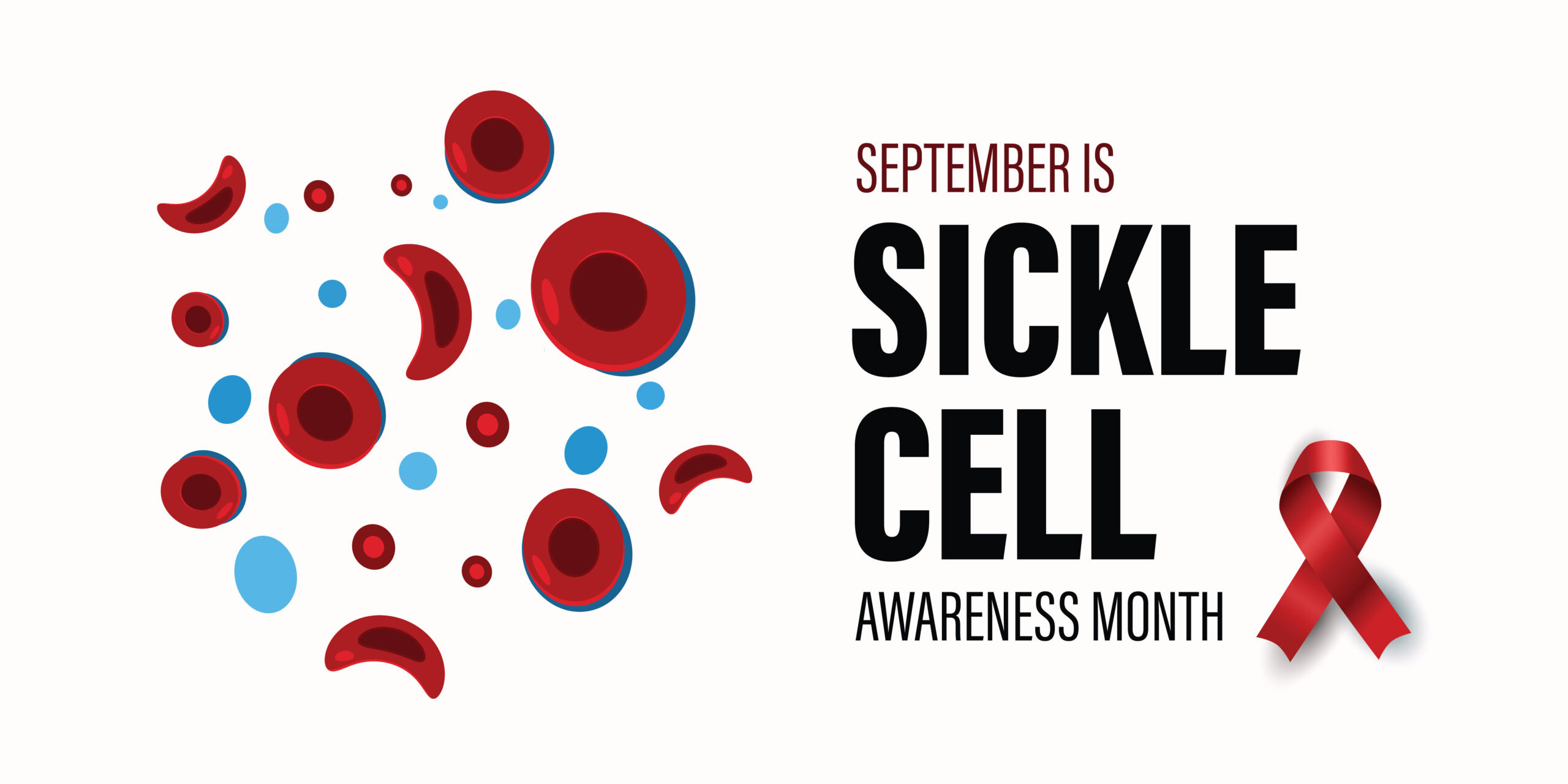

Sickle cell disease is a group of inherited disorders affecting the red blood cells. Healthy red blood cells are disc-shaped and smooth, and glide easily through even small blood vessels to provide oxygen to the body’s tissues. Red blood cells affected by sickle cell disease are rigid, sticky and crescent-shaped, resembling the farm implement called a sickle.
The exact number of people living with sickle cell disease in the US is unknown, but it’s estimated that approximately 100,000 Americans, mainly African-Americans, are affected. The disorder occurs in about one out of every 365 Black or African-American births and one out of every 16,300 Hispanic-American births.
People with sickle cell disease have abnormal hemoglobin, called hemoglobin S, or sickle hemoglobin, in their red blood cells. Hemoglobin is a protein that carries oxygen from the lungs through the arteries to the rest of the body. Sickle cell disease is caused by mutations to the beta globin gene that helps make hemoglobin. To have sickle cell disease, you must inherit two defective genes, one from each parent.
There are several types of sickle cell disease. The most common is HbSS. This type is also called sickle cell anemia. It is typically the most severe form of the disease.
People with sickle cell disease typically start to show signs of the disease during their first year of life, usually around 5 or 6 months of age. Signs and symptoms are different for each person and can range from mild to severe. Early signs of sickle cell disease include jaundice (a yellowish color to the skin), fatigue or fussiness, and painful swelling of the hands and feet.
Sickle cell disease can be diagnosed with a simple blood test. It is generally discovered at birth during a routine newborn screening at the hospital. Doctors can also diagnose sickle cell disease before a baby is born using a sample of amniotic fluid or placental tissue. The prenatal screening looks for the defective beta globin gene rather than abnormal hemoglobin.
Couples who are planning to have children and know that they carry the sickle cell gene mutation may want to meet with a genetic counselor to discuss the potential risks as well as their options.
Early diagnosis is important to help prevent complication of sickle cell disease. Complications develop when the sticky, sickle-shaped red blood cells clog the blood vessels. This can result in episodes of pain and cause the organs and tissues to be deprived of the oxygen they need to survive, damaging them. In addition, sickle cells have a much shorter lifespan than healthy red blood cells, and the body typically cannot make enough new cells to keep pace. This results in anemia.
Other potential complications of sickle cell disease include increased infections, leg ulcers, bone damage, joint problems, vision problems, heart problems, chronic pain, gallstones, developmental delays and stroke.
Currently, the only cure for sickle cell disease is a blood and bone marrow transplant. But there are treatments available to manage symptoms and complications, including chronic pain. Your doctor may recommend certain medications or transfusions to help with this.
Voxelotor is an FDA-approved medication for treating sickle cell disease in adults and children 12 years and older. It prevents red blood cells from forming the sickle shape and binding together, thereby decreasing the destruction of red blood cells and lowering the risk for anemia. It also improves blood flow to the organs.
The FDA approved another medication called crizanlizumab-tmea for adults and children 16 years and older with sickle cell disease. It is given by IV and it helps prevent blood cells from sticking to blood vessel walls and causing blood flow blockage, inflammation and pain.
Hydroxyurea is an oral medication that has been shown to reduce or prevent sickle cell disease complications. It is used in adults and children but not in pregnant women. Hydroxyurea can cause the blood’s white blood cell or platelet count to drop, or in rare cases, cause anemia to worsen. These side effects typically go away when the medication is stopped. After that, your doctor will usually prescribe a lower dose to avoid the side effects.
Your doctor may recommend a whole blood or red blood cell transfusion to help provide more healthy red blood cells to your circulatory system.





Leave a Reply